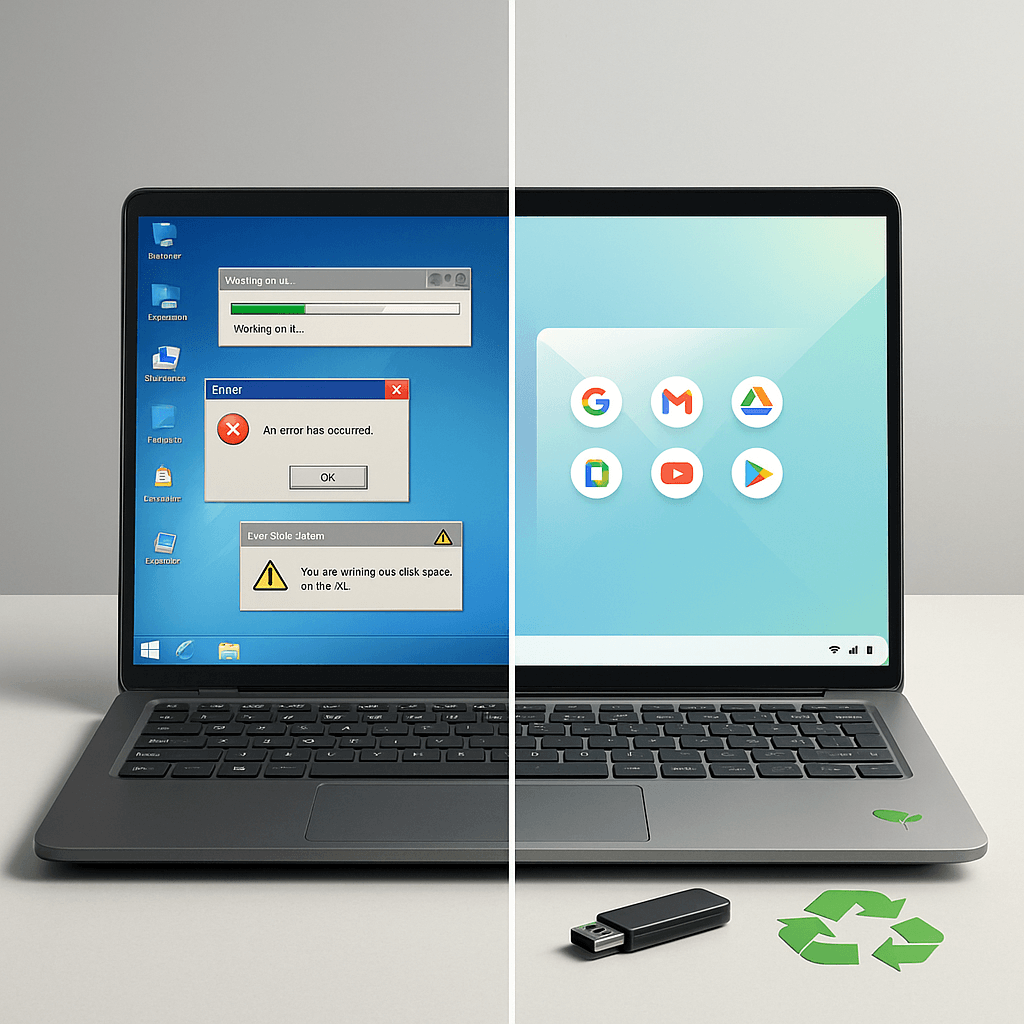Google is quietly solving the tech industry's old laptop problem with ChromeOS Flex, a free operating system that transforms aging Windows and Mac machines into functional Chromebooks. The lightweight OS breathes new life into sluggish computers that Microsoft and Apple have abandoned with update cutoffs, offering consumers a sustainable alternative to premature hardware replacement.
Your old laptop doesn't have to become e-waste just because it's slowing down. Google has been quietly offering a solution that transforms aging hardware into functional machines through ChromeOS Flex, and it's gaining momentum as more users discover this free alternative to expensive upgrades.
The timing couldn't be better. As laptops reach their twilight years with sluggish performance, random crashes, and mounting error messages, users typically face a costly decision: shell out hundreds for new hardware or struggle with increasingly unusable machines. Microsoft and Apple eventually stop supporting older hardware entirely, leaving users stranded.
But ChromeOS Flex changes that equation entirely. The operating system essentially strips away the bloat that's killing your laptop's performance, replacing it with what's essentially a souped-up Chrome browser plus essential extras. According to Google's support documentation, the OS works on an extensive list of certified models, though even uncertified laptops often run it successfully.
The installation process reveals just how streamlined Google has made the transition. Using Chrome's Recovery Utility extension, users can create a bootable USB drive in about 30 minutes, depending on internet speed. The process requires just an 8GB USB drive and works from any Windows or Mac computer - it doesn't even need to be the target machine.
What's particularly clever about Google's approach is the "try before you install" option. Users can run ChromeOS Flex directly from the USB drive without touching their existing operating system, letting them test compatibility and performance before committing to the switch. This removes the biggest barrier to adoption - the fear of permanently altering a working (if slow) system.
The performance gains can be dramatic. Since ChromeOS Flex is fundamentally a web browser with a desktop interface, it sidesteps the resource-heavy processes that bog down aging Windows and Mac machines. File management, settings configuration, and app launching all happen through the streamlined ChromeOS interface that Chromebook users already know.
For Google, this represents more than just a goodwill gesture toward sustainability. Every ChromeOS Flex installation creates a new entry point into Google's ecosystem of services, from Gmail and Drive to the company's growing suite of web applications. It's user acquisition through hardware rescue.
